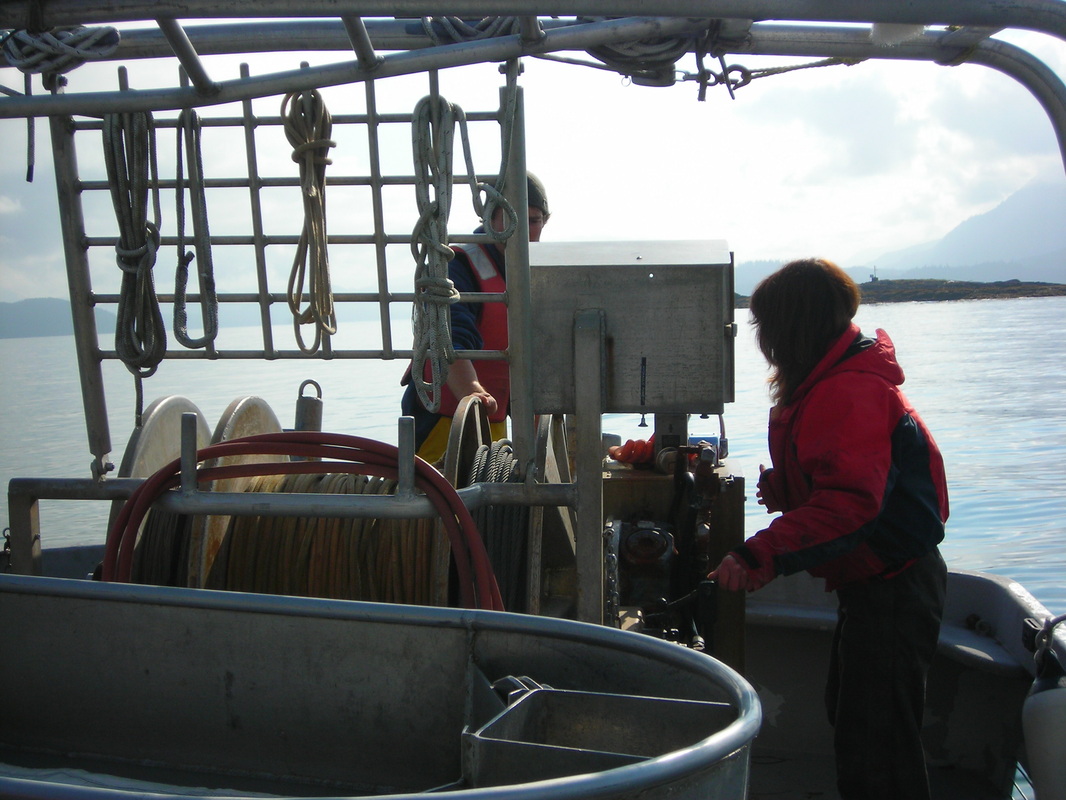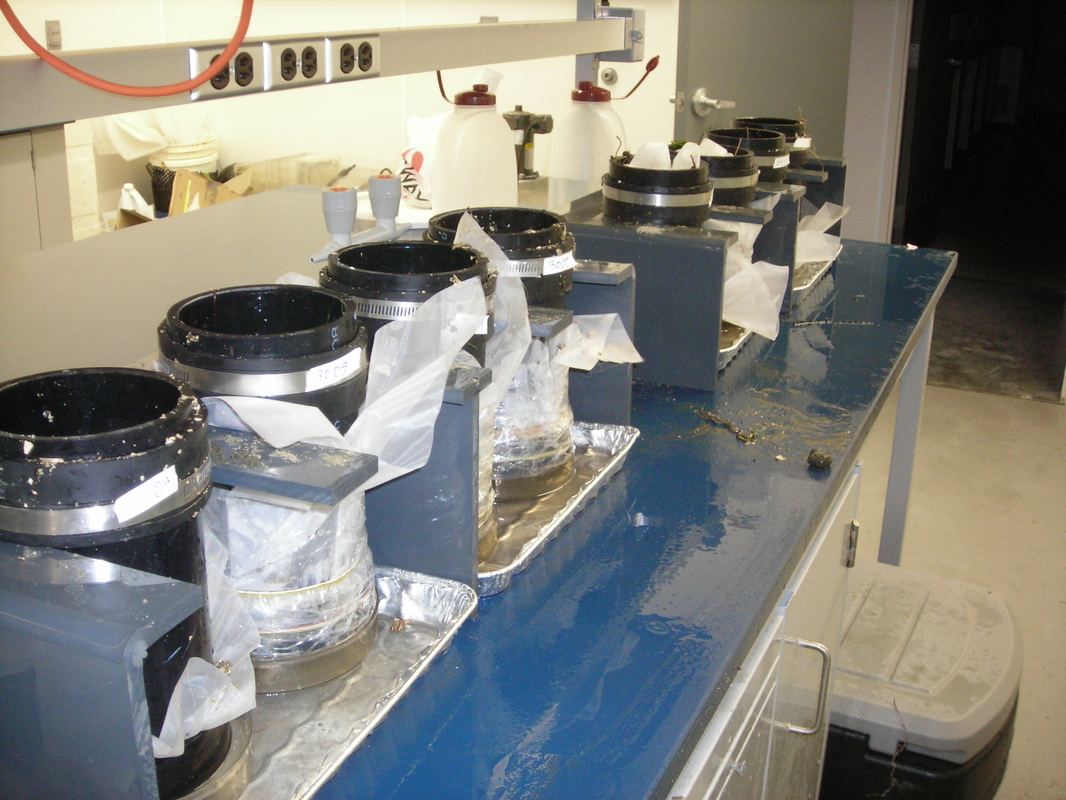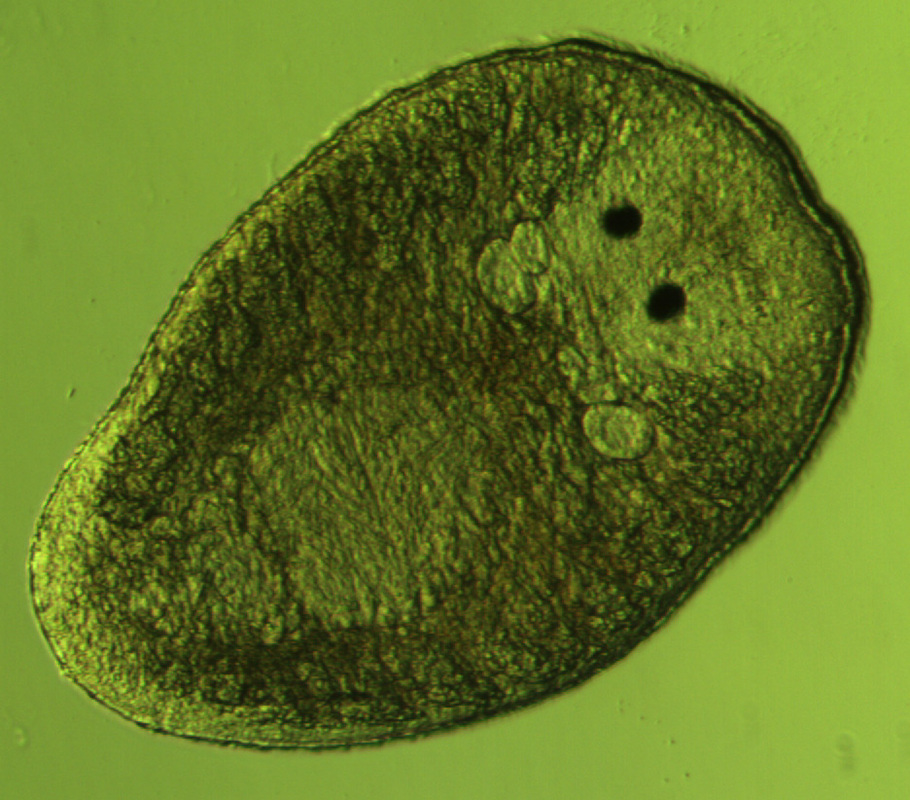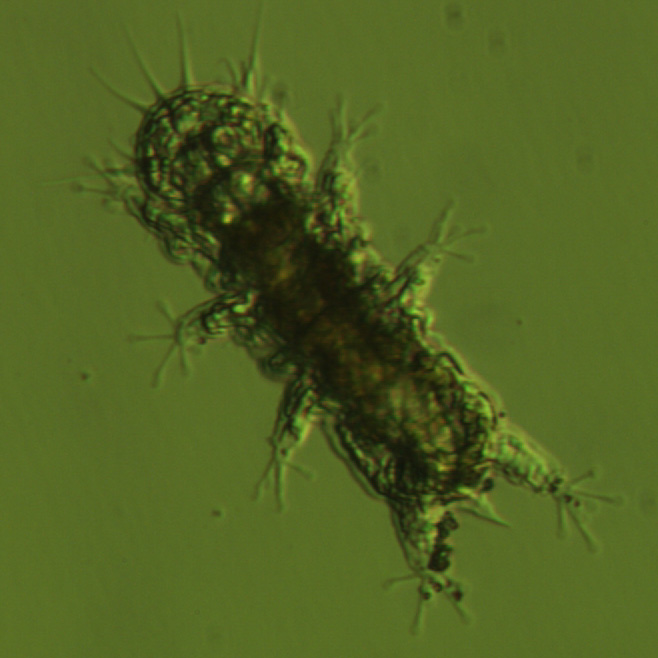Microscopic Aquatic Invertebrates
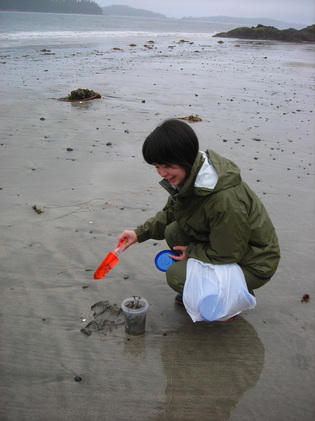
Colleaugue Dr. Aika Yamaguchi sampling microscopic organisms. Photo: R. Rundell
The spaces between grains of sand are filled with a huge diversity of organisms that rivals the diversity of a rainforest or coral reef. Dozens of major lineages of animals and single-celled eukaryotes can be found in a single teaspoon of sand. Animals living in these interstitial spaces fill a multitude of ecological roles, including grazers, bacteria-scrapers, detritivores, and voracious predators with deadly weapons for capturing their tiny prey. When you are wading at the shore, you are walking on billions of microscopic organisms that are hard at work keeping sand grains clean of decaying matter. Some of these organisms can also be used in ecological monitoring to understand the level of oxygenation in a particular aquatic habitat and overall health (or degradation) of those habitats.
Perhaps unsurprisingly, we know very little about the evolution and ecology of these tiny heroes of the beach. Most of my work in this area has been characterizing some of animal portion of this diversity (including entoprocts and flatworms) and understanding their evolutionary relationships. My fieldwork (in collaboration with the Leander Lab at UBC) has been primarily on the western coast of Vancouver Island, British Columbia, Canada (as pictured to the left), the Oregon and Washington coasts, and the island of Oahu in Hawaii. I plan to expand these efforts to include local freshwater areas as well as east coast marine habitats. If you are a student interested in learning more about these bizarre little organisms, please check out the "join us" page and contact me.
Perhaps unsurprisingly, we know very little about the evolution and ecology of these tiny heroes of the beach. Most of my work in this area has been characterizing some of animal portion of this diversity (including entoprocts and flatworms) and understanding their evolutionary relationships. My fieldwork (in collaboration with the Leander Lab at UBC) has been primarily on the western coast of Vancouver Island, British Columbia, Canada (as pictured to the left), the Oregon and Washington coasts, and the island of Oahu in Hawaii. I plan to expand these efforts to include local freshwater areas as well as east coast marine habitats. If you are a student interested in learning more about these bizarre little organisms, please check out the "join us" page and contact me.
